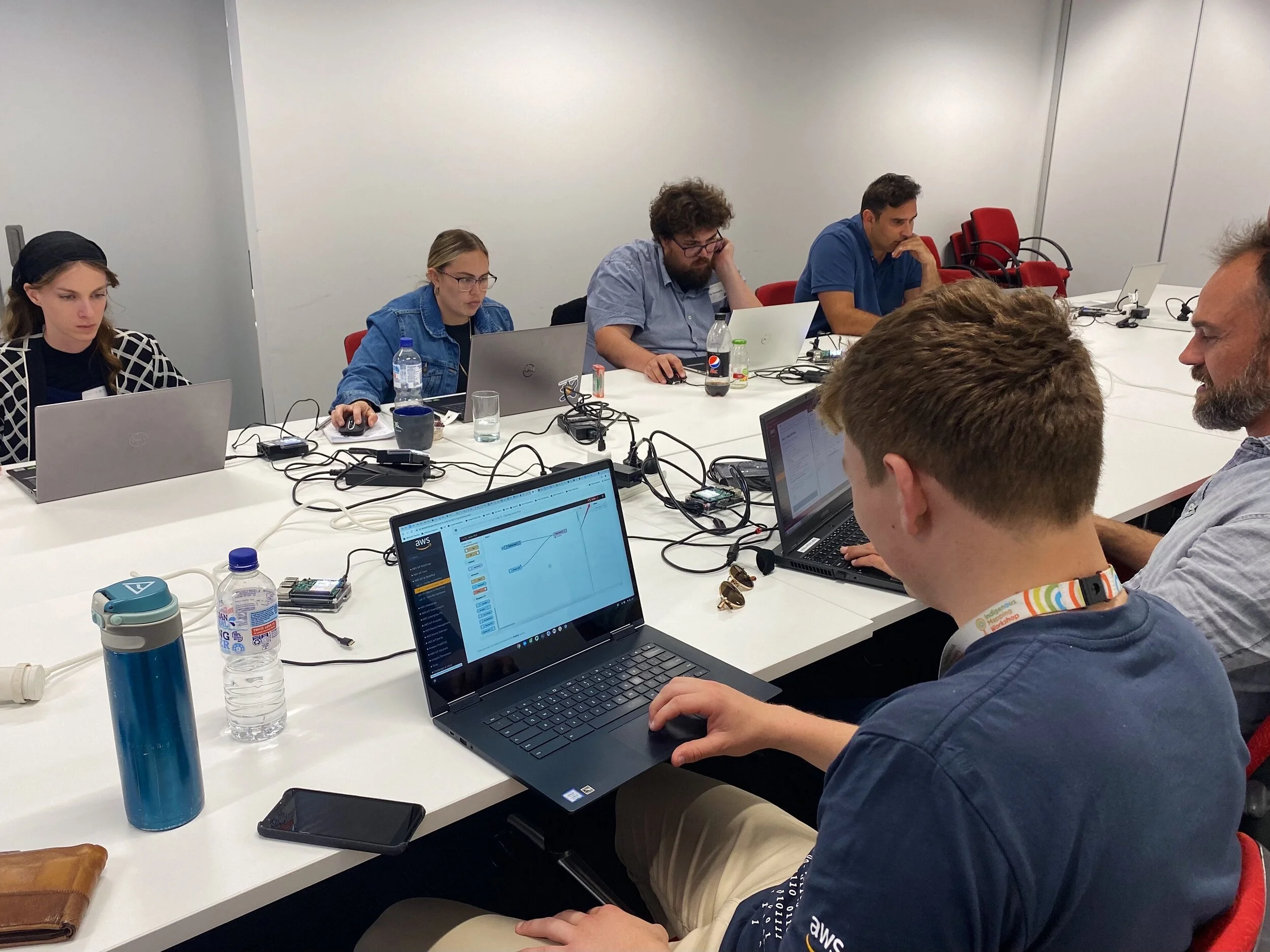The far reaching impact of Indigenous procurement
Words by Andrew Dowding.
When people think about IT services businesses, they wouldn’t immediately think about these service providers as “Aboriginal-owned businesses”. Prior to now, Indigenous providers working in the tech space were likely sole traders, or just simply did not exist for the government and other sectors to hire.
The truth is that it is pretty unusual anywhere in the world to see businesses in the tech space that are Indigenous-owned and led—they are few and far between. Let’s look at Australia as an example, where we know the statistics from the 2019 Australian Digital Inclusion Index (ADII) prove that Indigenous Australians fall below the national average when it comes to accessing digital technology (like the internet), affording digital tools, and having digital abilities. So, the likelihood of seeing Indigenous-owned businesses in the digital arena prior to 2019 is already an unlikely possibility.
Staff training in Amazon Web Services
There is fantastic news though. We have seen rapid change over the past five years as the landscape of Indigenous contractors diversifies. In this shift, my company Winyama has accelerated its offerings to the government and private sector industries by putting a great deal of effort into being an Indigenous supplier of digital services such as; geospatial, IT support, and cloud solutions.
In order to make these offerings to the Australian market, we have heavily invested in training our team and partnering with world-leading tech providers such as Google and Amazon. All of the members of the Winyama team, at the time of writing this blog, are Aboriginal people. It’s important that we acknowledge that the skills we are teaching the team are very technical and, as I mentioned earlier with reference to the ADII, not a traditional professional field for Aboriginal people to go into.
With this in mind, I’m proud to say I have a team of innovative, bright and fast learners who will add value to a range of projects when given the opportunity.
But like many other Indigenous business leaders operating in the digital space, we still face two core challenges:
Finding and working with clients who allow us to develop our trainees and training into real world opportunities (contracts for employment), and;
Having the government and private sector realise that we are here and ready to be hired.
So what does this mean for businesses that operate under the Indigenous Procurement Policy (IPP)? It means you are making a social investment.
The primary purpose of the IPP is to stimulate Indigenous entrepreneurship, business and economic development, providing Indigenous Australians with more opportunities to participate in the economy.
I believe that the IPP should be viewed as a social investment, rather than simply a box to be ticked. For me, the IPP allows for crucial Aboriginal career building opportunities, it allows us as business leaders to upskill our teams. What many non-Indigenous businesses may not realise is that when you hire an Aboriginal-owned business, you are investing in the community that surrounds it. Providing employment opportunities gives flow on effects to communities.
For example, at Winyama we run social initiatives, like the Indigenous Mapping Workshop. The only reason my team is able to invest time in this initiative, which provides mapping training to regional and remote communities, is because we have an income stream at Winyama that first enables us to technically train our own staff—so that they may then go on to train other Aboriginal and Torres Strait Islander people.
How can you find Indigenous digital contractors?
I wrote a blog last year for organisations with Reconciliation Action Plans. The article gives tips and advice on how to find Indigenous-owned businesses and covers off the benefits of working with Indigenous organisations, particularly those working in digital services and creative design.
The Western Australia (WA) government has recently announced new events where departments can meet with Indigenous suppliers, this is very encouraging to see. It is crucial that we all continue to work hand-in-hand to increase the visibility of Aboriginal businesses, particularly those that are working hard to find a place in our respective industries. To this end, one way you can support Indigenous businesses is through conscious consideration when looking for suppliers.
Here in WA, there are several diversified suppliers like Winyama who are working in spaces that are not typical for Aboriginal businesses. For instance, in the engineering space there is Warrikal, in graphic design you will find Nani Creative, in electrics you’ll see Matera—the list goes on.
These organisations have grown in recent times and are landing large contracts in their respective places. We see ourselves among them, and are proud to stand alongside them as their peers.

